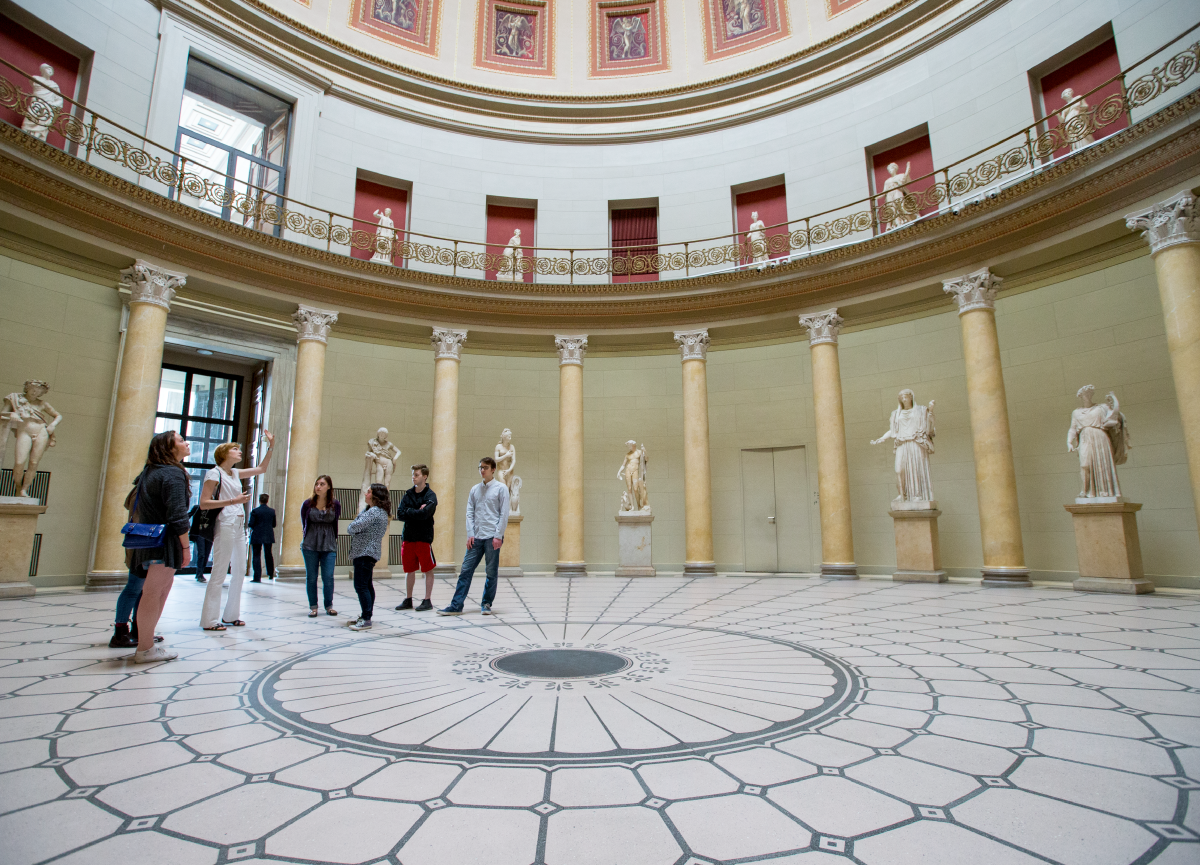
Berlin is a city of contrasts. For example, East meets west, charm meets grit, and past meets present. It’s a city that’s always reinventing itself. In fact, NYU Berlin’s academic center is located in a former brewery complex, the KulturBrauerei, and its studio space, St. Agnes, is in a former church complex. “I chose to study away in Berlin because it’s a highly cosmopolitan city, like New York City. But it’s had this tumultuous history of conflict and change that I find fascinating,” explains Kevin Qi. He’s a History and Philosophy major studying away at NYU Berlin. “You can see that history reflected in the culture as well as the physical architecture of the city.”

Berlin’s Museum Island, located in the heart of the city, features five renowned museums as well as the modern James Simon Gallery. The Altes Museum (Old Museum), with its neoclassical architecture, showcases Berlin’s collection of classical antiquities. “I took a history course called Comparative Modern Societies, which is about 20th-century Germany. We visited some very interesting museums and historical sites. Seeing these locations really added to the educational aspect of the course because we could see these sites with our own eyes. It helped me understand the full impact of the historical events we were studying,” Kevin says.

Berlin is a big, sprawling city. But it’s best to explore each neighborhood by foot. There’s always a new gallery to visit, a new cafe to try, or a new festival to experience. And anywhere you go, you’ll uncover more of Berlin’s history. “Karl-Marx-Allee is my favorite part of the city. It’s this boulevard with a distinctive communist architectural style built by the German Democratic Republic, or East Germany,” says Kevin. “I found it fascinating to see the physical remnants of the failed regime that still form such a large part of Berlin’s identity.”

The Spree River, one of Berlin’s two main rivers, runs from the Lusatian Mountains through the city. Rent a bicycle and follow the riverbanks, or take in the sites from a boat cruise.

The bright yellow train cars of Berlin’s metro system, the U-Bahn, run every two to five minutes during peak hours, making it easy to navigate the city. You can also take the train to neighboring cities, like Strasbourg in Alsace-Lorraine. “It was an eight-hour train ride, and I was completely independent for the first time in my life. Having that autonomy was a really transformative experience, and Strasbourg was truly amazing,” attests Kevin. “You can see the blend of German and French culture everywhere—physically in the style of the city, linguistically with local German dialects, and gastronomically in terms of the cuisine.”

Home to the world-famous Berlin International Film Festival, Berlin has a rich cinematic history and is well known as a motion picture hub. In Axel Bangert’s Topics in German Cinema class, NYU Berlin students analyze changing images of the city since the postwar period.

At NYU Berlin, students hone their German language skills and gain practical workplace experience through internship placements. “I interned at the Feuerle Collection, a private art museum located in a World War II telecommunications bunker,” says Kevin. “It hosts a combination of ancient Khmer sculptures, imperial Chinese furniture, and contemporary art. My favorite part had to be working with the tight-knit team to convey the collector’s unique vision in his museum.”


